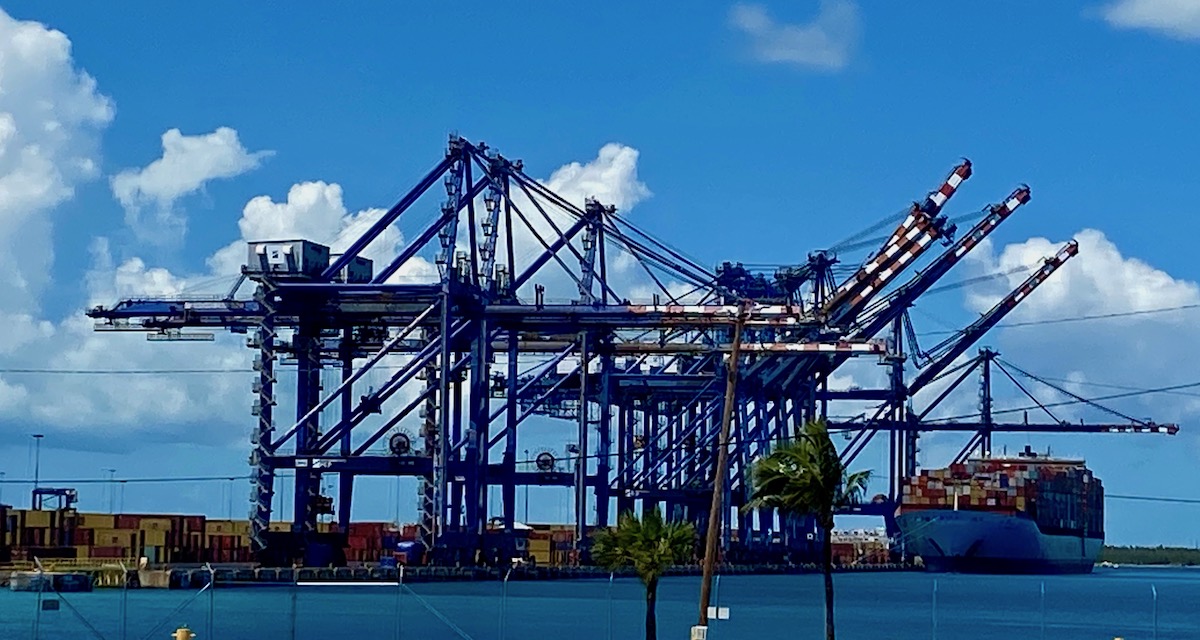
Import volumes are trending lower than a year ago over the past several months. Global Port Tracker reports the nation’s largest ports handled 1.96 million containers in June, up 0.7% from May but down 8.4% year over year.
Global Port Tracker projects that July imports surged to 2.3 million containers as retailers brought in merchandise ahead of tariffs threatened and imposed by the Trump administration. That would be the highest number in a year, up 17.3% from June and down just 0.5% from a year ago.
Hackett Associates expects import cargo volume to be down 5.6% below last year’s volume by the end of 2025. The forecast comes as tariffs on dozens of countries around the world were announced, postponed and then partially enacted while negotiations continue.
“While this forecast is still preliminary, it shows the impact the tariffs and the administration’s trade policy are having on the supply chain,” said Jonathan Gold, National Retail Federation vice president for supply chain and customs policy. “Tariffs are beginning to drive up consumer prices, and fewer imports will eventually mean fewer goods on store shelves. We need binding trade agreements that open markets by lowering tariffs, not raising them.”
Tariffs are taxes paid by U.S. importers that will result in higher prices for U.S. consumers, fewer jobs, lower business investment and a slower economy, Gold said.
“Friends, allies and foes are all being hit by distortions in trade flows as importers try to second-guess tariff levels by pulling forward imports before the tariffs take effect,” said Hackett Associates founder Ben Hackett. “This, in turn, will certainly lead to a downturn in trade volumes by late September because inventories for the holiday season will already be in hand. Meanwhile, U.S. exporters are being left with unsold products as counter tariffs are applied.”
IMPORT TRENDS, HISTORY
Global Tracker forecast August at 2.2 million containers, down 5% year over year, and September at 1.83 million containers, down 19.5% year over year. The forecasts for October and November call for volume declines of 18.9% and 21.1%, respectively. December is forecast to see volume declines of 19.3% from the prior year.
While the falling aggregate totals in September through December are related to pulling cargo forward during the first half of the year due to tariffs, the large year-over-year percentage declines are partly because imports in late 2024 were elevated due to concerns about East Coast and Gulf Coast port strikes, Hackett noted.
The first half of 2025 cargo container volume totaled 12.53 million containers, up 3.6% year over year. Volume forecast for the remainder of the year would bring 2025 to a total of 24.1 million containers, down 5.6% in 2024.
While there has been anticipation that tariffs would lead to higher prices, that has not yet materialized in a big way, according to R.J. Hottoway, an analyst with Placer.AI.
A recent report from the research platform Enable found that 73% of U.S. retail companies are starting to experience tariff-related profit losses. Also, 90% said they fear tariffs will further reduce margins over the next 12 months.
INFLATION
Also, on Tuesday, the July consumer price index (CPI) showed another increase in inflation, albeit at a slightly lower rate than in June. Inflation for all items rose 2.7% year over year in the July report. All food prices rose 2.9% from a year ago, while grocery prices increased 2.2% over the annual period. Apparel costs declined 0.2% from the same period last year and core commodities, excluding foods and energy costs, rose 1.2% year over year.
Hottoway said consumers feel the cumulative impact of inflation across their lives with CPI data showing electricity costs 5.5% more expensive in July than a year ago and natural gas prices rising 13.8%. Services costs were up 3.6% and shelter costs were up 3.7% year over year. However, fuel costs are down 9.5% from a year ago.
He said retailers are also selling through the inventory they brought in early in the year ahead of the tariffs, which has largely kept a lid on price increases through July. While more than 70% of retailers surveyed by Enable said they will increase prices to offset tariff impacts, 37% admit that it takes months to implement price changes.
“The lag between tariff updates and implementing price changes creates a window where competitors with faster pricing capabilities can capture significant market advantage,” said Andrew Butt, founder and CEO of Enable.
Beyond raising prices as their primary response to tariff pressures, 57% of businesses will reduce costs elsewhere, and 45% are considering scaling back or withdrawing from high-tariff markets.
